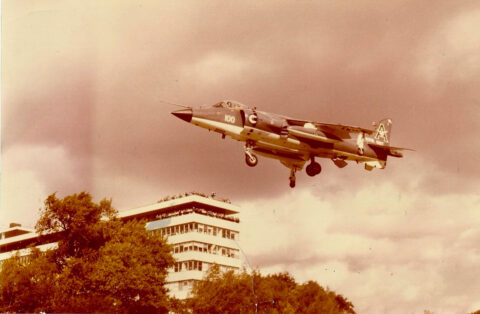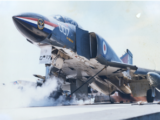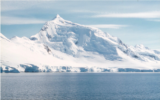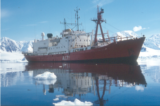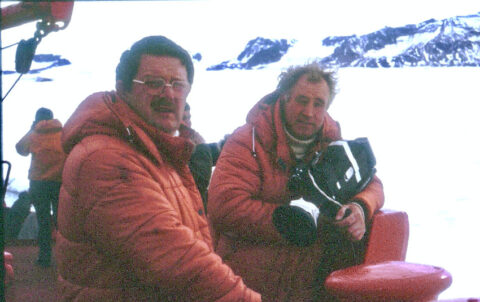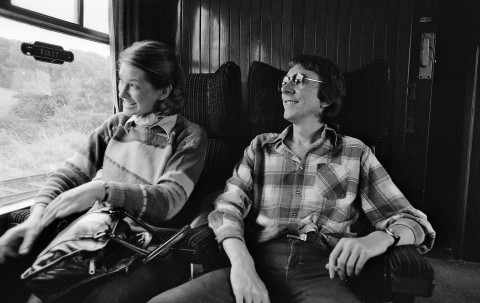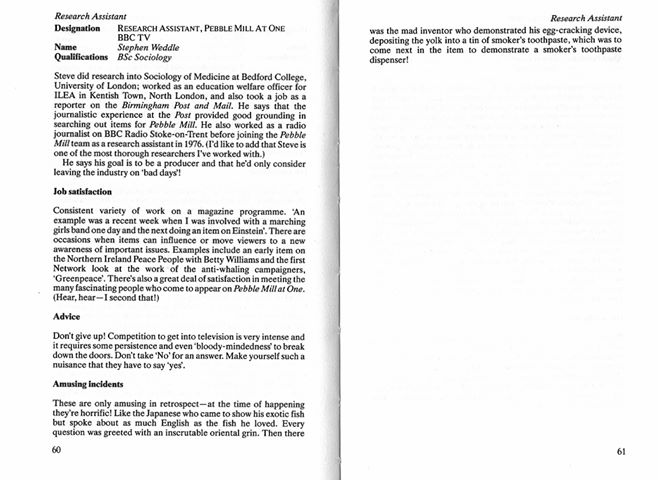I look down to the sea and find 50 fathoms below Her Majesty’s latest Nuclear Submarine.
I look to my left I see a class of 50 Chinese school children waving their hands welcoming the first BBC crew into China since the communist revolution and singing our national anthem.
I look to my right and see the vast white continent of Antarctica laid out before me. I hear a tremendous roar as an ice cliff the size of the white cliffs of Dover falls into the sea.
This was the domain of my friend and colleague John Smith some of which I was privileged to share. A maverick Producer/Director like no other straight from BBC’s Pebble Mill Birmingham network production factory.
Often, as his cameraman, I was able to put on film many of his ideas and one could guarantee working with John would not be the norm, best to expect the extreme knowing you will not be disappointed for It all came with the territory.
When John whispered me an idea, I found it wise to search behind the eyes to extract what this really meant. In reality this was to mean finding oneself in the most exciting of places and ultimately travelling the world.
He was one of the best fixers in the business who obviously had the ear of the military for we often used their hospitality to get from A to B.
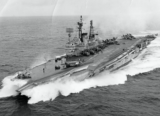
The “Heroes of Telemark” is a well-known true war story, John had us in Norway with 41 Marine commando putting his version on film. The result meant coping with the cold, learning to ski, how to dig and survive in a snow hole. Not good if you were claustrophobic and didn’t like being buried in snow with just a ski pole poked through the roof for air and a solitary lit candle to show there was air to breath. A fantastic story of man’s endurance and courage. I failed on the skiing.
Before we knew anything about illegal immigrants in this country John with his PA Jane Mclean took me to Hong Kong, then a British colony, to film a story of Chinese trying to escape their mainland to claim asylum and freedom on Hong Kong Island. They would use anything to cross the shark invested China sea, float on lilos, pay huge sums to smugglers using speed boats or the beautiful hand-built craft they had made themselves. We were to spend several days and nights hunting down these poor wretches some little more than children, some whole families. At sea at night once caught, they would be hauled on board tied up and made to lie down on the deck, a Naval Marine would throw a grenade into their boat making it disappear in a flash loud bang and hundreds of splinters left floating on the water. 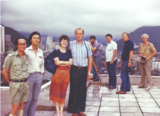
By day our helicopter would look for abandoned lilos to find their occupants hiding in the marshes. Swooping down they would be picked up, frightened, freezing have their hands tied with plastic straps and thrown into the back before being taken to a waiting truck and returned over the border into China only 30 minutes away. None of this was for the faint hearted.
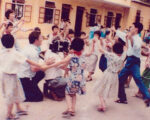 There was a bonus at the end of this story. As we prepared to return to the UK word got through the Chinese were letting a few tourists into their new development area Zhuhai through Macau just down the road and we might be able to go. Fixer Smith was on the case immediately sending his assistant Steve Weddle to see if it was on. The outcome three days filming courtesy of the Peoples Republic of China, wonderful hospitality a welcome chorus of God save the Queen sung in faltering English by a group of school children and a BBC scoop for Pebble Mill as the first crew into China after the revolution.
There was a bonus at the end of this story. As we prepared to return to the UK word got through the Chinese were letting a few tourists into their new development area Zhuhai through Macau just down the road and we might be able to go. Fixer Smith was on the case immediately sending his assistant Steve Weddle to see if it was on. The outcome three days filming courtesy of the Peoples Republic of China, wonderful hospitality a welcome chorus of God save the Queen sung in faltering English by a group of school children and a BBC scoop for Pebble Mill as the first crew into China after the revolution.
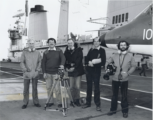 HMS Invincible her Harriers fighters, their pilots and crews who fought so magnificently to protect the fleet, another scoop for John as we had filmed them joining the ship for the first time. Pebble Island with the wonderful hospitable farmsteads where we had stayed the night a scene of a major battle and many deaths.
HMS Invincible her Harriers fighters, their pilots and crews who fought so magnificently to protect the fleet, another scoop for John as we had filmed them joining the ship for the first time. Pebble Island with the wonderful hospitable farmsteads where we had stayed the night a scene of a major battle and many deaths.
 It’s difficult to envisage the size of Argentina until you drive for hours on end and not see anything other than logging trucks. This is what it took including an unplanned overnight stay to get to the cattle ranch. It was only a brief stay but enough to see the Gauchos and how they rounded up the cattle, almost a Rodeo before going on to Buenos Aires to be flown to Stanley in the Falklands.
It’s difficult to envisage the size of Argentina until you drive for hours on end and not see anything other than logging trucks. This is what it took including an unplanned overnight stay to get to the cattle ranch. It was only a brief stay but enough to see the Gauchos and how they rounded up the cattle, almost a Rodeo before going on to Buenos Aires to be flown to Stanley in the Falklands.
I suspect for John and I this trip to the ice, the Earnest Shackleton story, visiting the English and America Antarctic survey bases must have been the highlight of both our careers. All that is said about the place is there, especially from the air. 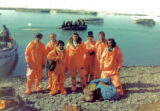
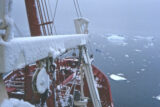
Nights came but it never got dark, evenings were spent in the wardroom telling tales or playing Cluedo according to Navy rules, rules which meant you could cheat as much as you like but not get caught. Hogmanay arrived whilst we were on board the Haggis duly piped in by our Scottish engineering officer in full gear delivered to the wardroom table. John and I survived, but only just. We took the ships whaler and rowed to the beach on Elephant Island where Shackleton eventually landed his crew.
Getting back to the UK was not uneventful. The flight to Buenos Aires was to mean flying through a tremendous thunderstorm with forked lightning flashing all around us and the aircraft being tossed around like a rag doll only surviving thanks to the skill of the brilliant Argentinian pilot. John and I sat next to one another saying nothing both looking at the lady in the next seat mumbling into her rosary!
